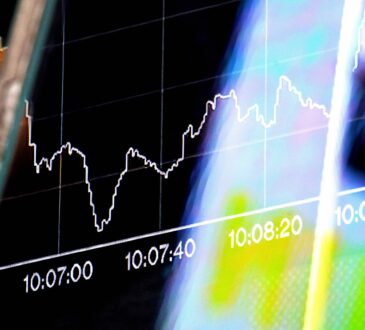
Earlier this year, we wrote about the 15 mutual funds and exchange-traded funds that created the most value for shareholders in dollar terms over the trailing 10-year period ended in 2024. To come up with the list, we ranked Morningstar’s database of U.S.-based mutual funds and ETFs, focusing on those that had the biggest increase in asset size over the 10-year period ended in 2024 after subtracting out total inflows and outflows over the same period. The resulting number reflects how much growth a fund has created from market appreciation in dollars.
This week, we’ll look at this from the opposite perspective, focusing on equity and alternative funds that have lost value for shareholders over the same period. For this list, we used a slightly different calculation based on how much appreciation (or depreciation, in this case) each fund generated in dollar terms over the trailing 10-year period. (For further details, see the “Methodology” discussion at the bottom of this article.)
Two important notes: This study doesn’t include bond ETFs or ETFs in the energy limited-partnership Morningstar Category because their income payouts can complicate how we estimate funds’ cumulative losses. It also focuses on results for long-only shareholders invested directly in each fund; it doesn’t capture changes in wealth for investors who might have invested in derivatives tied to these funds, such options on ETFs, or through short sales of ETFs. In other words, we focus on the assets that these funds charged fees on.
The Results
While the top wealth creators were all large, well-known names from some of the largest categories based on asset size, the wealth destroyers are mainly a motley crew of more-specialized fund categories.
Thirteen of the top 15 funds on our value destroyers list are exchange-traded products. ETFs have many things going for them—including low costs, tax efficiency, and typically a passive investment approach that makes them suitable building blocks for diversified portfolios—but they can have a dark side. For instance, some ETFs focus on narrowly defined sectors or themes, which can make them harder for investors to use successfully and can attract speculators.
When we looked at the biggest “value creators” in the fund industry, the list was dominated by the biggest fund families, including Vanguard, Fidelity, and American Funds. This reflects a positive feedback loop of size and performance: Strong performance attracts more assets, which in turn means the biggest fund shops have the most impact on wealth creation in dollar terms. Most of the firms that have destroyed shareholder value are smaller, but still large enough for losses to generate a major impact in dollar terms.
ARK, home of the flagship ARK Innovation ETF ARKK, saw the biggest aggregate losses in dollar terms. After garnering huge asset flows in 2020 and 2021 (totaling an estimated $29.2 billion), its funds were decimated in the 2022 bear market, with losses ranging from 34.1% to 67.5% for the year. Many of its funds enjoyed strong rebounds in 2023 and 2024, but that wasn’t enough to offset their previous losses. As a result, ARK funds incurred approximately $13.4 billion in realized and unrealized capital losses over the 10-year period—about twice as much as the next fund family on the list. ARK Innovation alone accounts for about $7 billion of this total. Both ARK Innovation and the other funds in the group earned a positive total return over the 10-year period ended in 2024, but poorly timed flows into its funds proved costly because most shareholders bought in after performance had already peaked.
The fortunes of the other fund families on the list also reflect badly timed fund flows as well as headwinds from focusing on out-of-favor areas. Many of the firms on our list have lineups that are heavy on specialized and volatile categories, such as commodities, natural resources, and emerging markets—areas that failed to enhance shareholder value during most of the decade covered in our study. KraneShares, Barclays, and Global X are three examples of this trend.
The worst value destroyers by Morningstar Category mainly consist of volatile and specialized categories, including several focused on leveraged and inverse trading. While such funds are meant to be used as short-term trading vehicles rather than long-term holdings, it’s not clear if shorter-term shareholders have enjoyed better results. Two commodity-focused categories—trading-leveraged commodities and commodities broad basket—fared relatively well amid higher inflation in 2021 and 2022. But the remaining categories have little investment merit. For example, we estimate that trading-inverse equity funds destroyed nearly $45 billion in shareholder value over the trailing 10-year period. These funds occasionally rise to the top by betting against the market; for example, many funds that bet against US stocks were up 15% or more in 2022. But because market returns are positive more often than not, the long-term results haven’t been pretty.
Two relatively mainstream categories—long-term government and global bond—also appear on the list. Despite their top-tier credit quality, long-term government-bond funds dropped nearly 30% when interest rates spiked in 2022. Global bond funds suffered less (dropping about 14% in 2022) but still generated large losses in dollar terms thanks to a combination of poor performance and badly timed fund flows.
Conclusion
The biggest value destroyers in the fund industry illustrate that there’s no guarantee of success, even during a generally favorable market environment. They also provide a valuable case study in how not to invest. (As Charlie Munger was fond of saying: “Invert, always invert.”) Investors have been far better served by the plain-vanilla fund categories that dominated the winners list, such as large-cap blend, allocation—50% to 70% equity, and foreign large blend. They’ve also generally fared well by sticking with the industry’s biggest and most established fund families. Volatile and speculative categories—as well as fund companies and active managers that attract a lot of short-term hype—on the other hand, are best avoided.
Methodology
Value destruction over the 10-year period reflects the sum of annual depreciation in dollars for each of the trailing 10 calendar years starting in 2015. We estimate depreciation by subtracting a fund’s cumulative flows over the 10-year period from the difference between its ending and beginning assets. With respect to ETFs, the calculation does not distinguish between flows that reflect the normal netting of supply and demand and those that stem from so-called “create-to-lend” transactions, whereby a market maker creates shares in order to facilitate a short sale of the ETF. In these cases, there is still a long investor, that is, the buyer of the ETF shares that the short seller has borrowed and sold short.
Our approach to estimating capital depreciation is consistent with how funds account for capital gains and losses in the financial statements they file with the Securities and Exchange Commission. We have compared our estimates with what the fund companies concerned have reported, finding our estimates approximate their reported figures.
For example, here is a link to the annual reports ARK filed over the 10-year period ended Dec. 31, 2024, for ARK Innovation. The relevant figure in each annual report is the ETF’s “Net increase (decrease) in net assets resulting from operations,” which is reported in its “Statement of Operations” as well as its “Statement of Changes in Net Assets.” We summed these figures from each annual report to corroborate our estimates.




